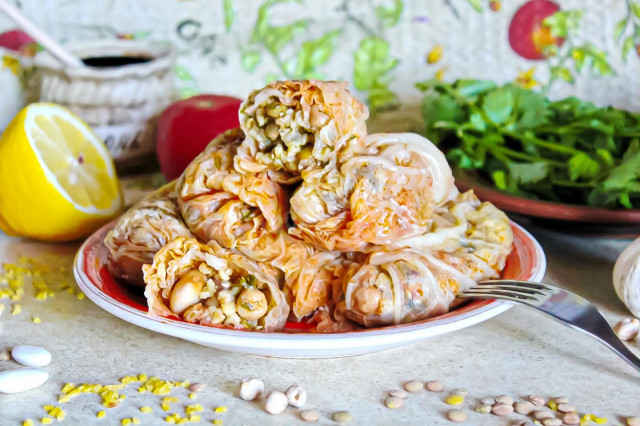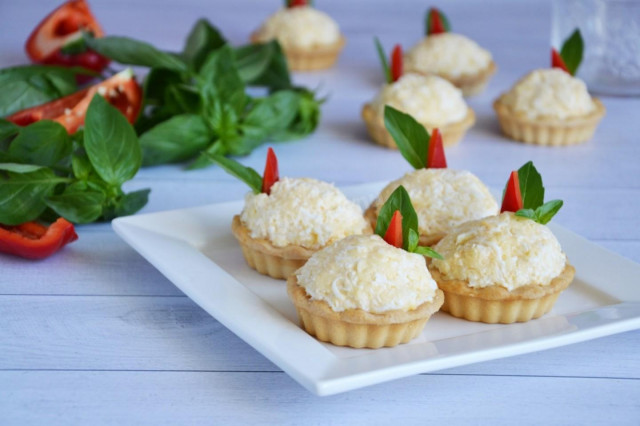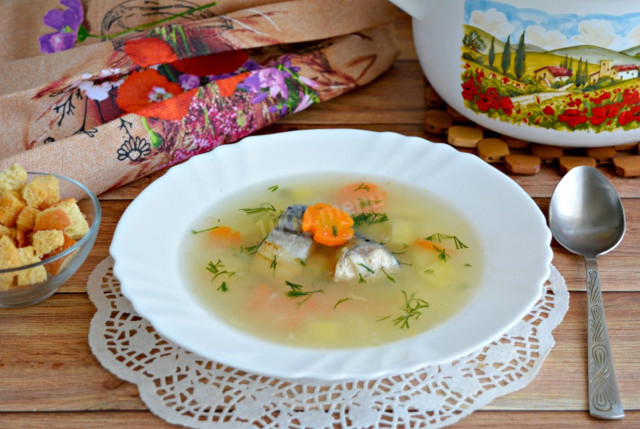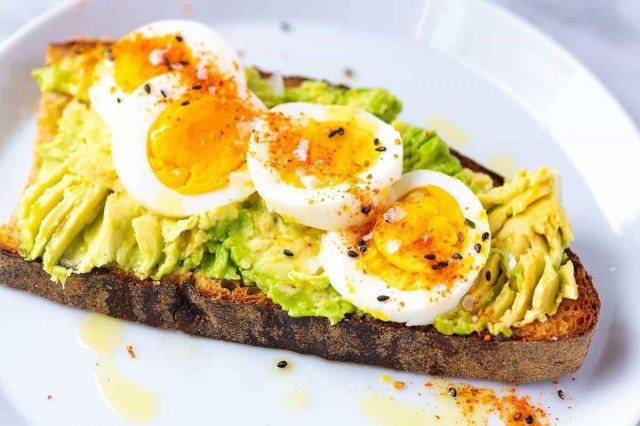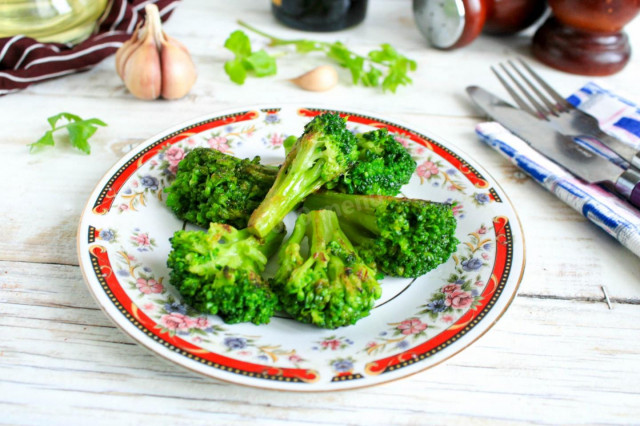Composition / ingredients
Step-by-step cooking
Step 1:
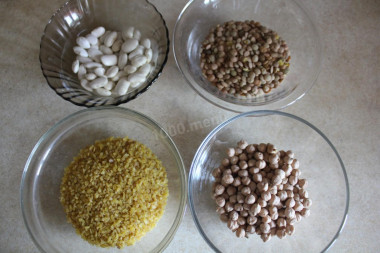
How to make an Armenian dolma passover? Prepare the products for the filling in advance — bulgur, lentils, beans and chickpeas. Rinse them well and soak them overnight. Then boil the chickpeas and beans in separate pots until half-cooked, about an hour. Rinse the bulgur and lentils, draining the water.
Step 2:
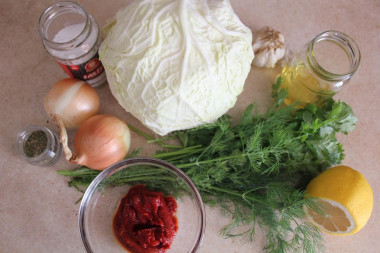
Also prepare the rest of the ingredients. Wash the greens, peel the onion and finely chop. Cut out the cabbage stalk.
Step 3:

Put the onion in a frying pan heated with vegetable oil. Fry the onion over low heat, stirring occasionally.
Step 4:

When the onion turns golden and becomes translucent, turn off the fire.
Step 5:
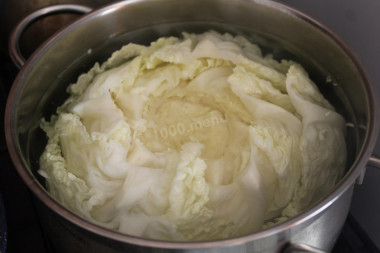
Take a large saucepan of such a size that a cabbage can fit into it. Boil water in it. Put a cabbage in boiling water. Boil it for 7-10 minutes so that the leaves become soft and pliable for wrapping the filling in them.
Step 6:

Combine the prepared legumes and grits in a deep bowl.
Step 7:
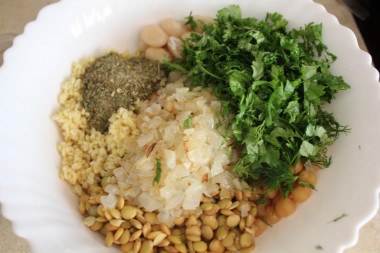
Add hops-suneli, or your other favorite spices, finely chopped fresh herbs and finely grated garlic, as well as salt and pepper to taste.
Step 8:
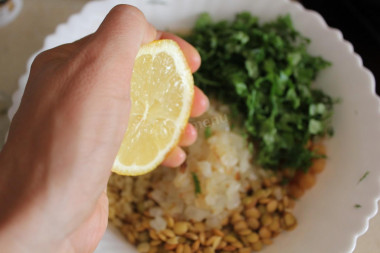
Pour in some lemon juice.
Step 9:

Mix all the ingredients of the filling thoroughly, taste it and add spices, herbs, salt, garlic or lemon juice if something is missing for your taste. The filling is ready.
Step 10:
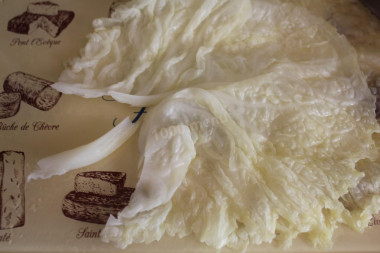
When the cabbage is cooked to half-cooked, pull it out, divide it into separate sheets and cut out the hard part from them. Put these parts on the bottom of the pan where the dolma will be cooked. Or you can not cut them out, but beat them with a hammer for chops so that they become softer.
Step 11:
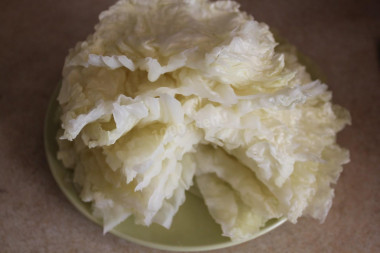
Cabbage leaves are ready. Now you can wrap the stuffing in them.
Step 12:
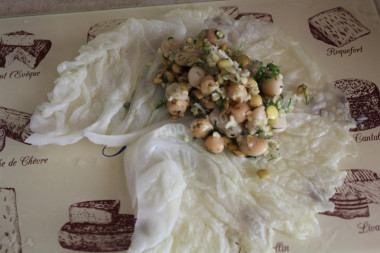
Take about a tablespoon of filling, put it closer to the edge of the sheet and wrap it in a roll, turning the edges.
Step 13:

Wrap tightly enough, but leave a little space at the same time, as the filling will increase in size even more when cooking. Put the cabbage rolls in a saucepan.
Step 14:
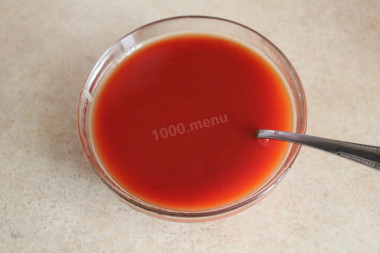
Take the tomato paste, dilute it in a small amount of water, add the remaining lemon juice and mix well. You can also add a little salt.
Step 15:

Pour this tomato mixture over the dolma.
Step 16:
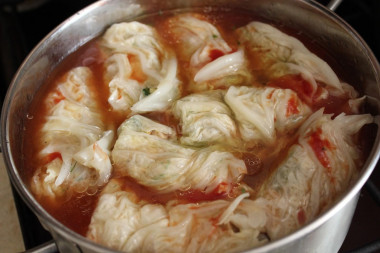
Then add water to the pan so that it covers the cabbage rolls, add vegetable oil on top.
Step 17:
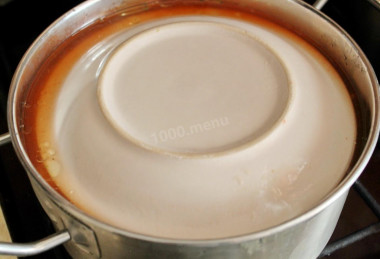
Cover the dolma with a plate smaller in diameter than the pan and put it on the fire to boil. When it boils, reduce the heat to a minimum and simmer the dish under the lid for about an hour. After an hour, try the dolma for readiness — both the leaves and the filling should be soft. Then the Armenian pasut dolma is ready. Traditionally, this dish is eaten cold, or rather at room temperature. Enjoy your meal!
Pasuts dolma in the original version is made from sauerkraut leaves. I have a simplified version of boiled cabbage leaves.
Regular peas are also added to the recipe. I did it without him. If you do it with peas, it can also be soaked overnight, but not boiled. It will be cooked already being in cabbage rolls.
Walnuts are also added to the filling in some versions of the recipe.
Regarding cereals, it is better to use spelt, it is more useful. Or they also use dzavar — this is whole wheat groats. But if you don't find them, then you can use bulgur — crushed wheat groats, as I did.
How to choose the perfect pot for soup, porridge or pickling cucumbers read the article about pots.
Important! Cooking from bulgur is delicious, easy and varied will help the article "Bulgur: get to know each other better and cook boldly!"
Tomato paste in this recipe can be replaced with tomatoes in their own juice, fresh tomatoes or ketchup.
Caloric content of the products possible in the composition of the dish
- Green cabbage - 46 kcal/100g
- Fresh frozen green cabbage in a package - 45 kcal/100g
- Beans - 328 kcal/100g
- White beans - 352 kcal/100g
- Fiery red beans - 23 kcal/100g
- Fresh frozen beans in a package (300 g.) - 102 kcal/100g
- Garlic - 143 kcal/100g
- Dill greens - 38 kcal/100g
- Dried, uncooked lentils - 340 kcal/100g
- Dried boiled lentils - 106 kcal/100g
- Lentils - 340 kcal/100g
- Bulgur - 342 kcal/100g
- Vegetable oil - 873 kcal/100g
- Tomato paste - 28 kcal/100g
- Hop-suneli - 417 kcal/100g
- Salt - 0 kcal/100g
- Chickpeas - 364 kcal/100g
- Water - 0 kcal/100g
- Onion - 41 kcal/100g
- Lemon juice - 16 kcal/100g
- Coriander greens - 25 kcal/100g

